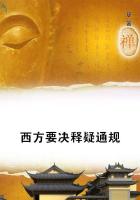The Osmia, as we see, is very frugal of the lodging that has fallen to her share; she makes the best possible use of it, giving to the females the spacious chambers of the Mason-bee and to the males the narrow vestibules, subdivided into storeys when this is feasible.
Economy of space is the chief consideration, since her stay-at-home tastes do not allow her to indulge in distant quests. She has to employ the site which chance places at her disposal just as it is, now for a male and now for a female. Here we see displayed, more clearly than ever, her power of deciding the *** of the egg, in order to adapt it judiciously to the conditions of the house-room available.
I had offered at the same time to the Osmiae in my study some old nests of the Mason-bee of the Shrubs, which are clay spheroids with cylindrical cavities in them. These cavities are formed, as in the old nests of the Mason-bee of the Pebbles, of the cell properly so-called and of the exit-way which the perfect insect cut through the outer coating at the time of its deliverance. Their diameter is about seven millimetres (.273 inch.--Translator's Note.); their depth at the centre of the heap is 23 millimetres (.897 inch.--Translator's Note.); and at the edge averages 14 millimetres (.546 inch.--Translator's Note.)
The deep central cells receive only the females of the Osmia;sometimes even the two ***es together, with a partition in the middle, the female occupying the lower and the male the upper storey.
True, in such cases economy of space is strained to the utmost, the apartments provided by the Mason-bee of the Shrubs being very small as it is, despite their entrance-halls. Lastly, the deeper cavities on the circumference are allotted to females and the shallower to males.
I will add that a single mother peoples each nest and also that she proceeds from cell to cell without troubling to ascertain the depth.
She goes from the centre to the edges, from the edges to the centre, from a deep cavity to a shallow cavity and vice versa, which she would not do if the ***es were to follow upon each other in a settled order. For greater certainty, I numbered the cells of one nest as each of them was closed. On opening them later, I was able to see that the ***es were not subjected to a chronological arrangement.
Females were succeeded by males and these by females without its being possible for me to make out any regular sequence. Only--and this is the essential point--the deep cavities were allotted to the females and the shallow ones to the males.
We know that the Three-horned Osmia prefers to haunt the habitations of the Bees who nidify in populous colonies, such as the Mason-bee of the Sheds and the Hairy-footed Anthophora. Exercising the very greatest care, I broke up some great lumps of earth removed from the banks inhabited by the Anthophora and sent to me from Carpentras by my dear friend and pupil M. Devillario. I examined them conscientiously in the quiet of my study. I found the Osmia's cocoons arranged in short series, in very irregular passages, the original work of which is due to the Anthophora. Touched up afterwards, made larger or smaller, lengthened or shortened, intersected with a network of crossings by the numerous generations that had succeeded one another in the same city, they formed an inextricable labyrinth.
Sometimes these corridors did not communicate with any adjoining apartment; sometimes they gave access to the spacious chamber of the Anthophora, which could be recognized, in spite of its age, by its oval shape and its coating of glazed stucco. In the latter case, the bottom cell, which once constituted, by itself, the chamber of the Anthophora, was always occupied by a female Osmia. Beyond it, in the narrow corridor, a male was lodged, not seldom two, or even three. Of course, clay partitions, the work of the Osmia, separated the different inhabitants, each of whom had his own storey, his own closed cell.
When the accommodation consisted of no more than a ****** cylinder, with no state-bedroom at the end of it--a bedroom always reserved for a female--the contents varied with the diameter of the cylinder. The series, of which the longest were series of four, included, with a wider diameter, first one or two females, then one or two males. It also happened, though rarely, that the series was reversed, that is to say, it began with males and ended with females. Lastly, there were a good many isolated cocoons, of one *** or the other. When the cocoon was alone and occupied the Anthophora's cell, it invariably belonged to a female.
I have observed the same thing in the nests of the Mason-bee of the Sheds, but not so easily. The series are shorter here, because the Mason-bee does not bore galleries but builds cell upon cell. The work of the whole swarm thus forms a stratum of cells that grows thicker from year to year. The corridors occupied by the Osmia are the holes which the Mason-bee dug in order to reach daylight from the deep layers. In these short series, both ***es are usually present; and, if the Mason-bee's chamber is at the end of the passage, it is inhabited by a female Osmia.
We come back to what the short tubes and the old nests of the Mason-bee of the Pebbles have already taught us. The Osmia who, in tubes of sufficient length, divides her whole laying into a continuous sequence of females and a continuous sequence of males, now breaks it up into short series in which both ***es are present. She adapts her sectional layings to the exigencies of a chance lodging; she always places a female in the sumptuous chamber which the Mason-bee or the Anthophora occupied originally.
Facts even more striking are supplied by the old nests of the Masked Anthophora (A. personata, ILLIG.), old nests which I have seen utilized by the Horned Osmia and the Three-horned Osmia at the same time. Less frequently, the same nests serve for Latreille's Osmia.
Let us first describe the Masked Anthophora's nests.















